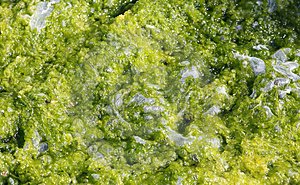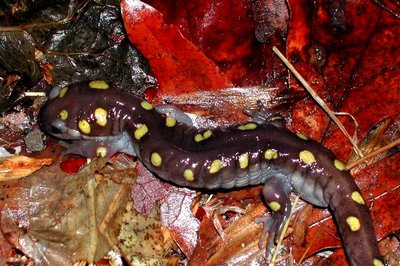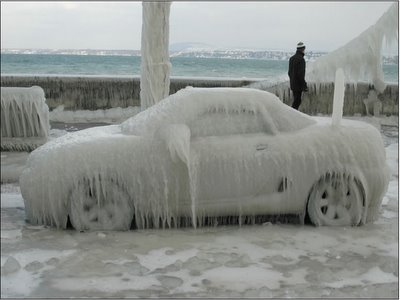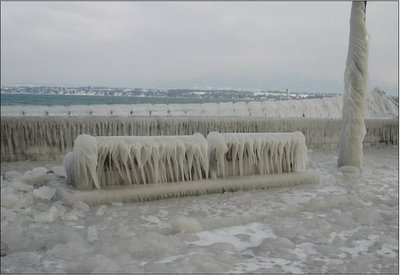
Chances are, you've never heard of Susanne Rust or Meg Kissinger, unless, maybe, if you live in Milwaukee.
I had certainly never heard of them and I have never met them. But I want to thank them nonetheless.
Susanne Rust and Meg Kissinger are members of an endangered species -- investigative newspaper reporters. And by all indications, they're pretty good ones.
By that I mean they pursued a story that was not sexy, that would not make them famous and was unlikely to hold the attention of most Americans. Why? Because it was important and because it may not have been something most people would initially "want" to know, but it is something they "need" to know.
The story is about a chemical, known as bisphenol A.
Never heard of it?
That makes two of us, until, that is, I stumbled across their on-line stories posted (
here and
here) on the Milwaukee Journal Sentinel Web site.
Now normally, despite being the greenie that I am, I would not rush downstairs in the morning to speedy quick read a report on bisphenol A before my morning coffee. I mean come folks, I may be a geek but I have a life you know.
But luckily, these two reporters did and now, I may think twice about what I put in my microwave.
Now experts on the chemical industry, as evidenced by
the newspaper's superlative series (how's that for $10 word alliteration?), these reporters and their editors have uncovered the places this chemical is found and the manner in which the chemical, which disrupts your endocrine system and can affect how children's brains develop, enters our bodies.
Take it from a guy who has read more than his share of technical scientific reports on everything from TCE to stream bank restoration, this was no walk in the park.
Having figured out something was fishy with this chemical, these two then did what nosy reporters are supposed to do, they looked at the people involved and asked the obvious question: where were the government regulators who are supposed to protect us from things like this?
The all-too-familiar answer was: in bed with the industry they were supposed to regulate.
It wasn't bad enough that, as they reported
here: "A retired medical supply manufacturer who considers bisphenol A to be 'perfectly safe' gave $5 million to the research center of Martin Philbert, chairman of the Food and Drug Administration panel about to make a pivotal ruling on the chemical's safety."
Or, as they reported
here that: "The U.S. Environmental Protection Agency routinely allows companies to keep new information about their chemicals secret, including compounds that have been shown to cause cancer and respiratory problems."
Or even
here: "A flame retardant that was taken out of children's pajamas more than 30 years ago after it was found to cause cancer is being used with increasing regularity in furniture, paint - even baby carriers and bassinets - and manufacturers are under no obligation to let the public know about it."
But then there was what I consider to be
the worst (best) of all. Something that has become all too typical in a country that demands protection it is often unwilling to pay for, and an all-too-familiar arrangement for those familiar with how the Bush White House worked under the Tom DeLay-dominated Congress: "A government report claiming that bisphenol A is safe was written largely by the plastics industry and others with a financial stake in the controversial chemical, the Journal Sentinel found."
Aside from the obvious "fox watching the hen house" cliches, perhaps the most important words in that last sentence are "the Journal Sentinel found."
Not "CNN has found," or "Fox News has found," or "ABC News has found."
Not "ijuststartedmyownwebsitesoimustbeareporternow.com has found," or "yahoonews has found," or even "The Thin Green Line has found."
Because stories like that, despite the fact that it could result in protecting babies (born and un-born I might point out) don't lend themselves to quick and easy sound-bites in Wolf Blitzer's Situation Room.
And they require work.
Not the "can you get a shot of that guy while I ambush him in the parking lot" work either.
No, they required the combined skills of painstaking research, experience-informed intuition and not-taking-no-comment-for-an-answer that are part and parcel of being a good investigative news reporter.
That is not work that is done by yahoo, or google. They get their news from wire services, which, more often than not, get their news from the very newspapers that the Web is putting out of business.
The Milwaukee Journal Sentinel is surely a business, but I doubt this series of stories brought in extra revenue, increased circulation or resulted in a crush of advertisers clamoring to be seen in its pages.
I doubt its stock rose because of this series.
Why should you care?
Because when those newspapers are gone, who will pay people like Susanne Rust and Meg Kissinger to expose a danger we and our babies face every day, a danger from which our government (as they so diligently showed) was incapable of protecting us?
No doubt, there are on-line journalists out there who can and do do this kind of work. My hat is off to them. But how do we discern between legitimate on-line reporting and the muddled musings and rhetorical evidence of the latest conspiracy-theorist/blogger?
The answer is we can't always.
But because the work done by Susanne Rust and Meg Kissinger came to us under the banner of a newspaper; a newspaper known to the country and its community; an organization answerable for what it presents, it is information that can be trusted, information that we feel more confident is the truth. Because if its wrong or inaccurate, we trust it will be corrected or those reporters won't have jobs anymore.
That trust, that name, is where the power of the press comes from and what makes chemical companies meet in sleek, glass-lined conference rooms and decide they have to deal with this revelation.
Hopefully, (gasp!) they may decide they need to clean up their act. Or maybe an enterprising U.S. attorney or regulatory agency will grow a set and decide they will clean it up for them; that perhaps slowly poisoning the population should be considered a criminal act, or at least frowned upon.
Increasingly, the Web provides opportunities for people to present information in an anonymous, non-accountable format. Without the reputation, the standing of an established (or even new) newspaper, the only thing that will happen in that conference room is laughter.
Will newspapers always arrive on your door-step rolled inside that paper bag, or screaming headlines from the honor box on the busiest corner? Probably not. No doubt they will exist in some form on-line, which is where I found the very reports I have highlighted here.
But while they may take on a new form or format, they must be allowed to retain their essential function in our society, as the first line of defense against corruption, waste and malfeasance in an attention-fractured society that does not have the time, energy or expertise to be a watch dog for its own self-interest.
This is true whether its the local paper digging into the latest property tax hike and where that money is going, or a major city daily exposing the hidden dangers of mysterious sounding chemicals.
This, as the title of this blog entry so flatly puts it, is why newspapers matter. They do what no else does, whether we've asked them to do it or not, for no other reason than because it needs to be done and nobody else will do it.
I'll climb down off my soap box now and we will return to environmental subjects at hand with our next post. Thanks for listening.
Labels: bisphenol A, chemicals, Meg Kissinger, Milwauikee Journal Sentinel, Susanne Rust

 RSS
RSS









